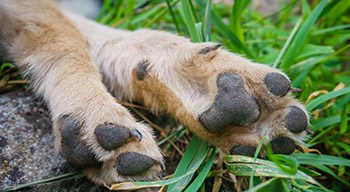
Footpads aren’t found on rabbits. Toes and metatarsals are covered with thick fur instead. These areas of your bunny’s feet should not be clipped, as they may develop pressure sores from it.
When picked up improperly, rabbits can also scratch with their sharp claws. Survival in the wild depends on their claws. With their strong claws, rabbits often dig underground burrows.
With their strong claws, rabbits often dig underground burrows. A claw is located on each toe. Due to its natural purpose of digging in the wild, these claws are very tough.
As well as defending themselves from predators, rabbits must also defend themselves from other rabbits. When rabbits want to be fierce, they can be quite docile.
As a result of their sharp teeth and claws, fighting rabbits can easily draw blood from each other and kick quite hard at the same time. Faces, bellies, and genitals are the most common targets for rabbits because they know how to injure each other.
To dig their burrows, they also use their claws. An animal excavates burrows in the ground by digging holes or tunnels. A burrow is a place in the ground where animals such as rabbits can live, seek refuge from predators, or move around.
Biomes and biological interactions vary and burrows can be found almost everywhere.
It is similar to what humans do when they are resting; rabbits need privacy to rest. When looking for food, rabbits exit their holes only to dig holes for sleeping.
There is also a haven for rabbits in rabbit holes. Predators are kept at bay inside their homes by these furry creatures.
The burrows are also a place where they retreat during hunting season to avoid humans. Cats, foxes, weasels and birds of prey are also notable rabbit predators, in addition to humans.
Babies are also born in burrows, which are safe places. During their first few weeks or months in the burrow, bunnies are usually cared for by their mothers.
Other articles you would like: How Long Can Bunnies Go Without Food? and What Does It Mean When A Bunny Licks You?
Table of Contents
Do Bunnies Have Claws?
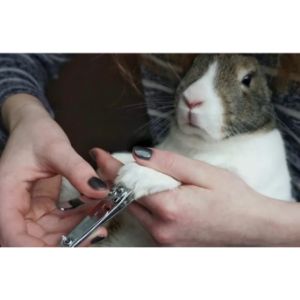
Every rabbit has claws, including bunnies. As rabbits burrow and defend themselves in the wild, they use their claws to dig. It is difficult for bunnies to leave their burrows at birth, as they are very helpless at the time of birth.
A bunny’s claws are not long or strong because they are born with them. Bunnies gain strength and sharpness as they age. In order to defend themselves against predators, they develop them at an early age.
Do Rabbit Claws Hurt?
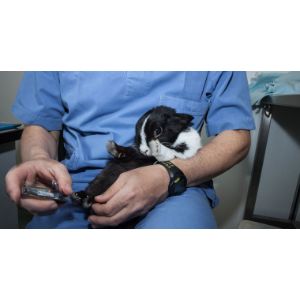
A rabbit’s claws are quite sharp. To live and dig burrows, unbury roots, bulbs, and vegetables to eat, and defend themselves from predators, they need them in the wild.
Regardless of whether your rabbit is intentionally hurting you, they can still cause pain. There are small, sharp claws on the hands.
The rabbit may use its claws to gain traction if it is scared or if it tries to move positions in your arms while you are holding it. When this happens, it can potentially cut or scratch you.
Do Bunnies Have Retractable Claws?

Rabbits and bunnies do not have retractable claws. Their claws are always out. They are dependent on their claws for traction since they do not retract like cats.
Retractable claws are seen in only a few species. Wear and tear can be prevented by claws that can be retracted. The majority of cats and dogs have dew claws on their inner front paws, but they are not retractable.
Which Animals Have Retractable Claws?
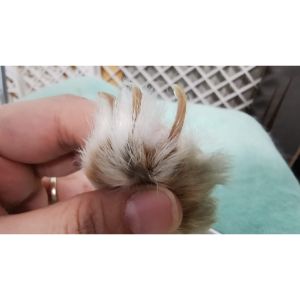
There are many reasons why animals use retractable claws, including catching prey, self-defense, digging, climbing, and adding traction when running.
By flexing a muscle in the paw, the claws are extended when needed. Animals can prevent unwanted wear and tear by retracting their claws and keeping their edges sharp.
Some animals, such as wolverines, also have semi-retractable claws, along with cheetahs.
The claws of some viverrids (a family closely related to cats, which can sometimes be mistaken for cats) are partially retractable, while the claws of genets and civets are fully retractable.
In contrast to other animals, who keep their claws enclosed in sheaths, the Otton frog actually pierces its skin with its razor-sharp, spiny claws. Except during breeding and fighting over females, they don’t often use their spines.
Do Rabbits’ Feet Have Claws?
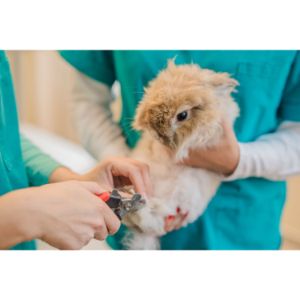
You’ll notice a rabbit’s back feet kick out when they run if you ever witness one running. In addition to being born with five toes on each foot, rabbits also have a dewclaw which falls off within a week after birth. This helps them maintain their speed and balance.
Balance and movement are achieved through the four remaining toes on each foot. Grasping the ground is made easier by claws on each toe.
There is a difference in length between the front and back feet and a wider spread between the toes on the front foot.
The rabbit’s feet have soft, spongy pads that help it keep its balance while running. Running quickly and absorbing shocks is made easier by this.
Other articles you would like: Why Is My Rabbit Throwing Up?
Should A Rabbit’s Nails Be Trimmed?
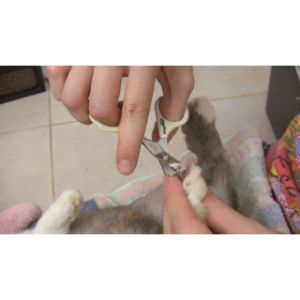
It is important to trim rabbit nails as needed. Rabbits can be trimmed if they get too long, but this can vary from rabbit to rabbit.
Trimming your pet’s nails safely and determining what length is appropriate can be done by your veterinarian. Cutting too short can result in bleeding and pain if you do it too short.
A variety of surfaces outside the hutch are necessary for rabbits to exercise regularly, which helps keep their nails healthy.
Associating nail trimming with positive things such as food and patting can help your rabbit get used to having their nails touched and trimmed early on.
Whenever your rabbit is calm, reward him with a pat or healthy food treat and some carrot tops while you are trimming.
Nail trimming can be frightening for some rabbits. This may be because a rabbit is anxious and fearful about the process of getting its nails trimmed. Ensure the rabbit receives enough exercise every day.
In the event that the rabbit’s nails still need to be trimmed, you may want to try desensitization.
Which involves gradually accustoming the rabbit to nail trimming in very small incremental steps, rewarding calm behavior, and ignoring any unwanted behavior that occurs while trimming the nails.
Start by placing the nail trimmers within your rabbit’s line of sight and rewarding calm behavior. Next, gradually increase the distance between the nail trimmer and the dog over time, rewarding him or her for calm behavior as you go.
Whenever your rabbit is upset, stop and try again the next day. Remain at the level where your rabbit was successful until he feels comfortable moving forward.
Here are some tips to keep in mind if you plan to trim your rabbit’s nails.
- Make sure you have everything you need in one place before trimming your rabbit’s nails so that you won’t have to start and stop.
- It is easier to hold a rabbit when they are swaddled in a towel and you reward them with treats.
- Trimming your nails just a little bit each time is far better than trying to do a lot as soon as they get too long.
- You don’t have to panic if an accidental shortening of a nail occurs. Put a little styptic powder on the nail end to stop bleeding as soon as possible.
- Whenever your rabbit struggles or the procedure takes too long, take a break between feet.
- As soon as you have trimmed all the toes that your rabbit will allow, recheck all the nails to ensure that none of them have bled before releasing it.
Conclusion For “Do Rabbits Have Claws”

Rabbits do have claws and while they are born with them they aren’t sharp or strong until they grow older. They use them to dig burrows, fight, and defend themselves from predators.
Their nails are sharp and can be painful if they scratch you. You can trim your rabbit’s nails to make them less painful and help keep them comfortable. Rabbit nails are not retractable but if trimmed properly they won’t cause a problem.
If you are not comfortable trimming your rabbit’s nails on your own, you can ask your veterinarian or find a small animal groomer who will be happy to do it for you.
You will also like:
- Why Did My Rabbit Die Stretched Out?
- Best Rabbit Rescues In Florida
- Best Rabbit Rescues In Pennsylvania
If you wan to learn more about rabbits, you can by watching “How to TAKE CARE of a RABBIT 🐰 Complete RABBIT CARE Guide” down below:

